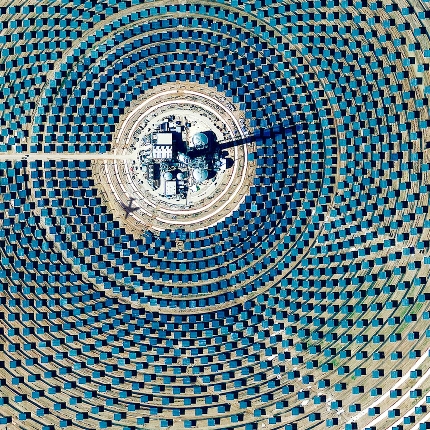22 October, 2014
 (Rinnovabili.it) – The future of solar energy was discussed during a meeting held October 10, 2014 at Rodengo Saiano (on the outskirts of Brescia) at the Museum of Industry and Labour MusIL with the fundamental contribution of the Group for the History of Energy Solar (www.gses.it). Solar energy can provide heat to low and high temperature, electricity with photovoltaic panels, generating winds and the waves, it produces biomass plant for photosynthesis. The heat of solar origin at a low temperature allows to heat water or buildings or of distilling sea water to obtain drinking water; the solar heat at high temperature, concentrated by mirrors can operate thermal machines. For these technologies, there have been important pioneering contributions Italians in the form of solar pumps, solar distillers and power mirrors. Some of those contributions the Museum, a branch of Luigi Micheletti Foundation in Brescia, has collected, donated by individuals and exposed participants, finds of great interest and a bibliography only in Italy. Of all the technical and scientific knowledge of the past 150 years in the use of solar energy only a small part is used today to meet the energy needs in the form renewable and clean.
(Rinnovabili.it) – The future of solar energy was discussed during a meeting held October 10, 2014 at Rodengo Saiano (on the outskirts of Brescia) at the Museum of Industry and Labour MusIL with the fundamental contribution of the Group for the History of Energy Solar (www.gses.it). Solar energy can provide heat to low and high temperature, electricity with photovoltaic panels, generating winds and the waves, it produces biomass plant for photosynthesis. The heat of solar origin at a low temperature allows to heat water or buildings or of distilling sea water to obtain drinking water; the solar heat at high temperature, concentrated by mirrors can operate thermal machines. For these technologies, there have been important pioneering contributions Italians in the form of solar pumps, solar distillers and power mirrors. Some of those contributions the Museum, a branch of Luigi Micheletti Foundation in Brescia, has collected, donated by individuals and exposed participants, finds of great interest and a bibliography only in Italy. Of all the technical and scientific knowledge of the past 150 years in the use of solar energy only a small part is used today to meet the energy needs in the form renewable and clean.
The sun radiates annually on Earth an amount of energy that is two thousand times higher than the total energy consumed in the same period by seven billion earthlings, but unfortunately still only 0.5 percent of world energy consumption is obtained by the Sun photovoltaic panels or the blades of wind turbines. During the meeting it has been reviewed many other technologies, already known, that could draw useful energy from the sun. Many of these would have a key role to help in their development people, more than one billion in the world, who have no electricity or petroleum products, and which are those living in areas in which is the greater the intensity of the solar radiation. With appropriate technology would allow the Sun to dry agricultural products, distilling the saline water to obtain drinking water, with eliopompe extract water from underground, warming food in the cooker in a non-polluting. Photovoltaic plants of small size could provide electricity to operate pumps or refrigerators or telecommunications systems for isolated communities. The energy of the Sun ensures the cycle of evaporation and condensation of water flowing continuously in streams and rivers and the motion of these waters can produce energy with plants compatible with the territory. The MusIL has an ongoing inventory of the location where the remains of ancient water wheels indicate the presence of hydraulic forces can be used with modern machinery. The conference was concluded by pointing out that the rediscovery of solar technologies and forgotten by the improvement of existing ones may be occasions lasting business and labor, which can contribute to social and human development in many regions and countries, to reduce dependence on fossil fuels in industrial countries and the specter of slowing global warming planet and its disastrous effects, under the eyes of all.
Of great interest is the update of the state of the PV and its technological evolution that has allowed an increase in yields and a substantial cost reduction. For solar thermal power, if for Italy are not feasible larger plants with flat mirrors in concentration that require large tracts of desert, seem promising the thermodynamic of small scale and low and medium temperature, with parabolic mirrors or a function of a self-propelled focal longitudinal axis, where substances particularly reactive to the thermal gradient, such as the molten salts, allow powering engines or turbines for production of electricity. So Italian technologies that could have a big development, as the prototype of eliopompa Nova Somor exhibited for the first time to the public on this occasion, which incorporates, with the necessary innovations, the eliopompa designed and built in 1935 by Luigi Gasperini.
In short, a conference that has offered so many avenues of research, innovation and industrialization can, potentially of great interest for economy and good quality jobs for which our country badly needs.
Follow us on: